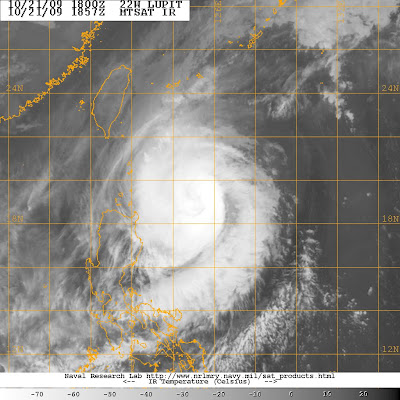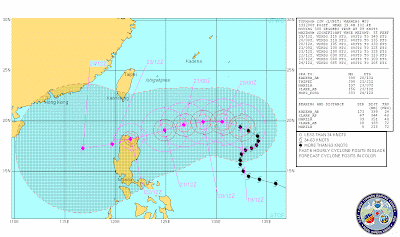The
Naches landslide, as I reported in my post yesterday, is a somewhat intriguing failure. The weather conditions were dry, the rivers are in low flow conditions, and there has not been an earthquake that could have caused the failure. So what happened?
A clue may be in the landslide type. Several reports have suggested that the initial failure was a rotational slide. I am struggling slightly to get a proper appreciation of the slide (does anyone know where there is a decent set of images taken from an aircraft or a helicopter?), but a quick inspection of the images from the galleries that Heidi posted in the comments from
yesterday's post is helpful. These three images, from this
Washington State DoT gallery, are particularly helpful:
First, this one appears to show the highway uplifted well above the previous position (compare this with the Google Earth image
here):

The second one appears to show the uplifted road and the gravels and cobbles from the river bed also uplifted well above the previous position:

Finally, this one also seems to show greatly uplifted river bed material:

Some of the other images even show dead fish amongst this material, so there is not much doubt what this is.
So how can the river bed be uplifted in this way by a landslide coming off the hillside. One possible explanation (lets call it a working hypothesis - I must stress that this is very tentative on the basis of the images) is that this is indeed a rotational slide. A typical rotational landslide looks like this (image from
Geoscape Calgary):

Notice how the movement has occurred on a curved surface - this is what makes the slide rotational. Notice also how material at the toe (foot) of the slide is lifted up due to the movement on the curved surface. Sometimes fragmentation of the blocks in this area causes flows to develop, but often this takes some time as the block starts to break up and weather. So, the uplifted road and riverbed is consistent with a rotational slide, although this is still only a hypothesis. In reality the images suggest that the slide is probably rather more complex than that shown above, but the essence may be a rotational failure.
If that is the case, why did it fail. Well, for most rotational failures movement is the result one or more of three causes:
- The strength of the materials on the shear surface reduces. This is most likely to be the effect of rainfall causing high water pressures, although in this case that appears unlikely (although a leaking pipe or similar can sometimes be a factor). Materials sometimes degrade with time as well, causing a so-called progressive failure that usually has no trigger, so this is a possibility. If that is that is the case, and such failures are quite rare but definitely do occur, the slope should have shown lots of signs of problems for some time prior to failure;
- Mass is added to the slope at the top of the block that fails, which adds to the driving force, triggering failure. Sometimes dumping of spoil or garbage on the slope can trigger failures of this type. No such process is evident here, but it is possible.
- Mass was taken away from the toe of the slope. Much of the resistance to movement in a rotational slip comes from the material at the toe. Indeed, a common way to stabilise a rotational slide is to add mass the toe (often called a toe weight). A good example is the rotational landslide at Folkstone Warren in the UK (image from here):

The huge structure at the bottom of the slope is a toe weight designed to buttress the slope to prevent a rotational failure, and thus to protect the railway line.
So, removal of the material at the toe (or low on the slope) could be enough to cause failure.
Therefore, if I was asked to look at this slide I would do the following:
- Work out what type of failure this is - i.e. is it a rotational slide?
- Find out whether there were any water pipes or suchlike on the slope that might have been leaking, or anything that might have been feeding water into the slope from above;
- See whether anyone had dumped a substantial amount of material high up on the slope;
- See whether anyone had removed material from low on the slope.
I know where my immediate suspicions would lie, but a proper investigation is needed. It may well be the case that the failure occurred because of a chain of events involving two or more of the possible causes outlines above.
 Mirinae is not especially strong in terms of windspeed, but the eTRaP data suggest that rainfall volumes are high (this is the precipitation forecast for the next 24 hours):
Mirinae is not especially strong in terms of windspeed, but the eTRaP data suggest that rainfall volumes are high (this is the precipitation forecast for the next 24 hours): The topography of this area is pretty mountainous, and the typhoon will pass close to Manila:
The topography of this area is pretty mountainous, and the typhoon will pass close to Manila: The ground is likely to still be very wet from the two earlier typhoon events, although in these residual soils the drainage rate is probably quite high, so there is probably a higher likelihood of landslides than would normally occur for a typhoon of this size.
The ground is likely to still be very wet from the two earlier typhoon events, although in these residual soils the drainage rate is probably quite high, so there is probably a higher likelihood of landslides than would normally occur for a typhoon of this size.







 This has been an extremely fortunate outcome, and one that has also exposed the continuing problems with forecasting typhoon tracks. The
This has been an extremely fortunate outcome, and one that has also exposed the continuing problems with forecasting typhoon tracks. The  The threat to Luzon has certainly not gone away completely, but is certainly receding substantially. Luckily, at the moment the storm is also forecast to miss Taiwan as well. Unless there is a dramatic change of direction of the storm this will be my last post on Lupit.
The threat to Luzon has certainly not gone away completely, but is certainly receding substantially. Luckily, at the moment the storm is also forecast to miss Taiwan as well. Unless there is a dramatic change of direction of the storm this will be my last post on Lupit.


















 Note that the labels on the track give the date and time - i.e. 21/00Z represents midnight (UT) on 21st, so the storm is some days away. Track forecasts are quite unreliable (that is what the shaded area represents), but the danger here is very real. With the ground being very wet from earlier events, a direct hit from this storm could be very serious. My experience is that late season typhoons (and this is most definitely late in the season) often seem to be quite damaging, although I have no empirical evidence to support that observation.
Note that the labels on the track give the date and time - i.e. 21/00Z represents midnight (UT) on 21st, so the storm is some days away. Track forecasts are quite unreliable (that is what the shaded area represents), but the danger here is very real. With the ground being very wet from earlier events, a direct hit from this storm could be very serious. My experience is that late season typhoons (and this is most definitely late in the season) often seem to be quite damaging, although I have no empirical evidence to support that observation.























